Respiratory physician Lutz Beckert considers chronic obstructive pulmonary disease management, including the prevention of COPD, the importance of smoking cessation and pulmonary rehabilitation, and the lifesaving potential of addressing treatable traits. He also discusses the logic of inhaler therapy, moving from single therapy to dual and triple therapy when indicated, as well as other aspects of management
Workforce woes and budget blues: Cook Islands’ healthcare is all about the people
Workforce woes and budget blues: Cook Islands’ healthcare is all about the people

Zahra Shahtahmasebi finds out how a tiny Pacific nation’s health system copes with the twin challenges of vast geographical area and tight workforce constraints
“COVID-19 basically caused the birth of primary health in the Cook Islands,” Dr Faireka says.
Until the COVID-19 pandemic arrived, the Cook Islands had no primary care service.
Now, a beachside primary care centre can be found on the main island of Rarotonga, 2km outside Avarua township.
In November 2020, health services were decentralised in an attempt to protect high-risk patients at the hospital, and to make space for a COVID-19 isolation ward.
The primary care centre was established at a former outpatients clinic at Tu Papa. Five community health clinics, called “puna”, were also set up in each district to provide basic health services like postnatal checks and medication refills.
Introducing primary care was always on the cards, but the pandemic hastened the change, says director of primary healthcare Teariki Faireka.
“COVID-19 basically caused the birth of primary health in the Cook Islands,” Dr Faireka says.
After spending much of 2021 on clinical attachment in Northland, he returned to find splitting the services has been positive, significantly reducing the burden on Rarotonga Hospital’s emergency department, which previously dealt with everything from boils to issuing medical certificates, from heart attacks to appendicitis.
Dr Faireka sees many similarities between Rarotonga and rural New Zealand in terms of the challenges of healthcare delivery.
“When we’re stretched, we pull 12-hour shifts, or double shifts, and you just have to be open to it, but burnout is an issue,” he says.
From some parts of New Zealand’s Far North, it is a 200km drive to Whangārei Base Hospital, then another 160km to Auckland City Hospital for tertiary care.
On Rarotonga, it takes a maximum of 45 minutes to get to the hospital from the furthest point on the island, but tertiary level care is a four-hour flight away in New Zealand.
The special relationship between the two countries entitles Cook Islanders to receive healthcare in New Zealand, and patients are referred to specialists in Auckland, Wellington, Christchurch, and sometimes Tauranga, for health issues that can’t be dealt with and managed locally. This means the likes of pacemakers, cancer treatment, cardiology and hip replacements.
There isn’t even capacity for palliative care, says Rarotonga Hospital services manager Helen Sinclair.
“We have them at the hospital for a short time and when they want to go, we release them,” Ms Sinclair says. There are no resthomes, but family carers and non-governmental organisations provide care in the community, she adds.
Dr Faireka says staffing is an area of similarity with New Zealand: workers are in short supply, and hard to retain.
“When we’re stretched, we pull 12-hour shifts, or double shifts, and you just have to be open to it, but burnout is an issue,” he says.
Tu Papa primary care clinic sits on a beautiful beachfront but, without adequate remuneration, this is not enough of a drawcard, says Dr Faireka.
The Cooks must compete with New Zealand for staff, but cannot offer the same training opportunities or pay.
Rarotonga Hospital chief obstetrician and gynaecologist Kevin Lamo Bisili, originally from the Solomon Islands, worked in his home country as well as in Fiji, Vanuatu, Kiribati and the Marshall Islands, before coming to Rarotonga in 2018.
“I think we are quite fortunate here, our facilities, standard of living, and with the help of New Zealand, our health system is quite advanced compared to other island counties,” Dr Bisili says.
Complicated cases, for example in pregnancy, gynaecology and cancer, can be discussed with colleagues in New Zealand and the patient can be referred if necessary.
The arrival of Rarotonga’s first CT scanner last year has allowed for more advanced investigations, he says.
But popular and picturesque Rarotonga is just one of 15 islands in the Cooks group, and many of the considerably smaller islands (referred to as the Pa Enua, or outer islands) are spread over two million sqkm of the South Pacific Ocean.
These populations are quite literally hard to reach, says former MidCentral DHB pharmacist Andrew Orange, who has spent the past six years running the pharmacy service at Rarotonga Hospital.
“When you’ve got cyclone season and there’s no transport north for three months…People die where they wouldn’t normally in New Zealand, because health services there are much easier to access.”
The population of the Cook Islands is about 17,500, but Census surveys have included tourists, Mr Orange says. With people constantly coming and going, the true number is hard to capture.
Some 200km north of Rarotonga, Aitutaki is the best known of the Pa Enua, and home to around 2000 people, whereas Palmerston, 500km north-west, has a population of 58. Three islands, Suwarrow, Manuae, and Takutea, are uninhabited.
The largest community of Cook Islanders – numbering more than 80,000 – actually lives in New Zealand. The health system in the Cook Islands is complex.
Aitutaki has its own hospital, with a total of 80 staff, including two doctors and 13 nurses; the rest of the Pa Enua have their own health services, often run single-handedly by a nurse practitioner or a nurse.
Rarotonga Hospital is responsible for providing healthcare to its local population and the whole country, distributing medicines and other resources to the Pa Enua, as well as accepting referrals for any patients whose condition can’t be managed by the staff, facilities, and resource available.
To allow this to happen, hospital manager Ms Sinclair must always be thinking ahead.
“Supplies to the Pa Enua need to be provided ahead of time, so they don’t run out. So, whenever we have a ship going out, we ring up and ask what they need,” she says.
Flights to two of the Pa Enua can only be made on a charter basis, and others don’t even have an airstrip. In the case of emergencies, Ms Sinclair says they have to radio call and see if there are ships in the vicinity that could pick up the patient.
“If not, we will charter a boat. They ring me and say: ‘Helen, get your things, you’re off.’
“It takes an overnight trip to get to Palmerston by boat and the furthest I’ve travelled for a medevac is to [local island] Nassau, which was a two-day trip.”
I get a lot of what we call ‘corridor consults’, that includes supermarkets, dairies, it includes my driveway
Aside from emergency medicine and pharmacy, Rarotonga Hospital also has general medicine, surgery, obstetrics and gynaecology, paediatrics, physiotherapy, and laboratory departments.
The anaesthetics department hasn’t been running since last year, after the doctor went on a clinical attachment to New Zealand, says director of hospital services, Yin Yin May. Locums fill the vacancy, which is both expensive and time-consuming.
“If I was a mean person, I would call him back,” says Dr May
“But I’ve known him since he was a 10-year-old boy in Aitutaki, and I don’t have the heart to do that to him...This is an investment for the future of this country.”
Workforce is the first challenge on Dr May’s list – she can count the number of doctors based at Rarotonga Hospital on both hands.
It’s not only a shortage of doctors, but nurses too, of which there are only 40. The whole hospital has a total of 200 staff, including the non-clinical teams: infection prevention and control, maintenance, and food and nutrition.
Funding is next on her list, as she describes a limited budget that does not seem to shift to meet the increasing demand on all services.
Ever since the arrival of personal protective equipment (PPE), cold-chain storage for the COVID-19 vaccine, the CT scanner and a new PCR lab last year, she is often asked by Te Marae Ora Cook Islands Ministry of Health why the power bills are increasing.
“They don’t understand that we didn’t have all of that equipment before,” she says.
The hospital’s organisational structure specifies there should be a specialist, two registrars and two interns in the emergency department, which is currently staffed by one doctor.
But even if these extra staff could be recruited, there is no money in the budget for them, Dr May says.
Salaries are low enough as it is; Rarotonga’s doctors earn between $50,000 and $55,000 a year. They will not stay and struggle with the rising cost of living, Dr May says, unless there is something they really want to stay for, like family.
New Zealand specialists visit the island once a year and spend a few weeks treating patients deemed high priority. This service had to be put on hold during COVID-19, but has recently started back up again.
But it’s more complicated than that, Dr May points out. The cost of patient transfers both within the Cook Islands and to New Zealand is significant and, for those leaving the country, they need to be “accepted” by the consultant on the receiving end. Fortunately, more often than not, they’re accepted.
“Recently, we had a baby delivered from a healthy mother that went into pulmonary hypertension immediately,” she says. “We had to transfer the baby by air ambulance, which cost $85,000.”
Then there was an eight year old on Maungaia, who was having seizures but had no history of epilepsy. Dr May says they chartered a flight to Rarotonga, then to New Zealand.
Dr Faireka says patients needing care in New Zealand must fulfil certain criteria specified by the airline.
“If their case is too serious, and Air New Zealand won’t accept them, we have to look at alternative transport, like a private air ambulance,” he says.
As Dr May says, it always comes down to money.
“Every week, we are having transfers to New Zealand, because of heart problems, pacemakers...[but] we have no more money for referral this month.”
She would like to see Rarotonga Hospital with its own cardiology department, but realistically that is 20 years down the line at least.
“The first thing I’d like to see is a new hospital, but for that you have to have a very strong workforce, which means money.”
Dr May says she is forever grateful to her team, who work exceptionally hard. “There’s a lot of teamwork here. We just had the specialist visit [from New Zealand] doing laparoscopies, and our nurses are all working 12-hour shifts.
“Then you get a question from the planning and funding team, asking why they are working 12 hours, and you just want to swear at them.
“The good thing is, I never learned to swear.”
Dr Bisili not only heads up obstetrics and gynaecology, he is also the only doctor in that department.
Working alone is what he finds both the most rewarding and challenging aspect of his job.
“The population is small…and with the experience and skill I have, I’m able to face the challenges and I like working singlehandedly,” he says.
On the flip side, he often has to make decisions about complicated cases on his own. It is those times that he is most grateful for the connection and support both from Rarotonga Hospital’s director, Dr May, the former chief of obstetrics and gynaecology, as well as his specialist colleagues in New Zealand.
Ideally, he’d love to have a team of three, including another specialist like himself as well as a registrar.
“My dream is to have someone in this role as a local, to train them and build up the number in the department, so they can continue obstetrics and women’s health for the country.”
Prospective medical students travel mostly to Fiji to train, or sometimes to New Zealand if they can afford it.
The Cook Islands School of Nursing has recently restarted a bachelor’s degree programme, but funding and enrolment numbers mean this is not smooth sailing.
Paediatrician Donna Pau’u and surgeon Deacon Teapa are in the same boat as Dr Bisili – the heads of their respective departments, but equally they are currently the only doctors of their kind on Rarotonga.
As a result, all three are on call 24/7, 365 days a year. They work their normal day shifts at the hospital, then go home, with the phone never too far away in case of emergency.
Breaks and leisure time on a daily basis are hard to come by, as are holidays.
Another downside, says Dr Teapa, is that they can’t get off the island for continuing medical education and networking.
“We have Skype, Facebook, Viber, but we still need to go to workshops, courses and conferences.
“Trying to get someone to replace you for the duration of two to three weeks is a daunting task.”
It’s not just him but his staff too: “We only have one theatre team that looks after both after-hours and acute cases.”
Dr Pau’u says caring for Cook Islands children is what drives her.
“If you have a sick child and you see them get better and running around with a big smile on their face…They all have so much potential, you look at them and think ‘oh, this one could be the next prime minister’.”
Rarotonga Hospital doesn’t have a neonatal intensive care unit, but Dr Pau’u believes there is scope to establish one.
“We can’t really manage very pre-term children. Any babies below 1.8kg get referred to New Zealand – there are so many complications that can occur that New Zealand is the best place for them.
“It’s a big call to put a baby on the plane – it’s a stressful burden, but it has to be done, we’ve got to do the best we can.”
Air New Zealand is very particular about the age group it can accept on its airlines, says Dr Pau’u. The alternative is a costly air ambulance.
Rarotonga Hospital has a good relationship with Starship Children’s Hospital in Auckland, she adds.
“They understand what resources we have, and I’m quite thankful they accept our cases, especially when they’re looking after New Zealanders too.”
Dr Teapa returned to Rarotonga in 2013, after completing fellowship training in Tauranga and Whakatāne Hospitals on New Zealand’s east coast.
“Coming back home is the best part, and working with the people I love to be with, providing my expertise and surgical care.
“You get to know a lot of people as well – depends on how you look at it, because sometimes that can also be a bad thing,” he laughs.
“I get a lot of what we call ‘corridor consults’, that includes supermarkets, dairies, it includes my driveway. People come to my door for a consult, which I don’t mind, but it sometimes gets to you if they wake you up in the middle of the night.”
Dr Teapa replaced a surgeon who served for more than 35 years: “I’m hoping not to stay as long as him,” he chuckles.
But staff recruitment is hard and, without new blood coming through, this could be the reality he faces.
There are mixed thoughts as to whether having training programmes for health careers in the Cook Islands would make a difference to recruitment and retention.
Ms Sinclair is sceptical, saying if students could train in their own country, they would still leave for “greener pastures” – that’s just the way it is.
“They will make their money and then they will return back home eventually.”
But the Cook Islands needs staff now, not in a decade’s time. A bond requires medical graduates return to the Cook Islands and serve their community for at least three years, but no one adheres to that, says hospital director Dr May.
“And there’s nothing we can do about it,” she says.
She references the Cook Islands GP fellowship programme set up with New Zealand in 2013. Candidates do four rural general practice papers and go to New Zealand for one year, with attachments in Auckland and Rawene in Northland.
Four students completed the programme, two of them “taking off” on their own immediately afterwards; one became the doctor for the Cook Islands Sports and National Olympic Committee, and the fourth stayed.
“So only one is actually working for us. The Ministry of Health was generous with their investment, but where is the return?” asks Dr May.
The Cook Islands is too small to have its own medical school, but Dr Bisili believes there is room for postgraduate training to be run within the country
The general consensus is that significant investment to allow for better pay, increased staffing in every department and access to more resources would go a long way towards improving healthcare in the Cook Islands, both for the staff and the general community.
Ms Sinclair says that, in a perfect world, the Government would increase the budget and provide the necessary human resources.
“But when you only have this much money, you have to prioritise things, and see how best you can work with what little you have.
It’s all about the people, people, people,” she says.
“As long as we get the right information out there, letting them know what services we deliver, increasing awareness and making them be responsible for their health.”
Former New Zealand Doctor Rata Aotearoa journalist Zahra Shahtahmasebi travelled to the Cook Islands on a nib health journalism scholarship which was awarded at last year’s Voyager Media Awards
Healthcare on an island such as Aitutaki is never straightforward, says Aitutaki Hospital manager Mareta Mose.
“The work is never planned – anything can happen at any time,” Ms Mose says.
Ms Mose says. The morning meeting with New Zealand Doctor Rata Aotearoa had been rescheduled; she was called to a healthcare emergency and organised a medical evacuation.
READ MORE of Zahra's feature on health services in the Cook Islands
We're publishing this article as a FREE READ so it is Free to read and Easy to share more widely. Please support us and our journalism – subscribe here



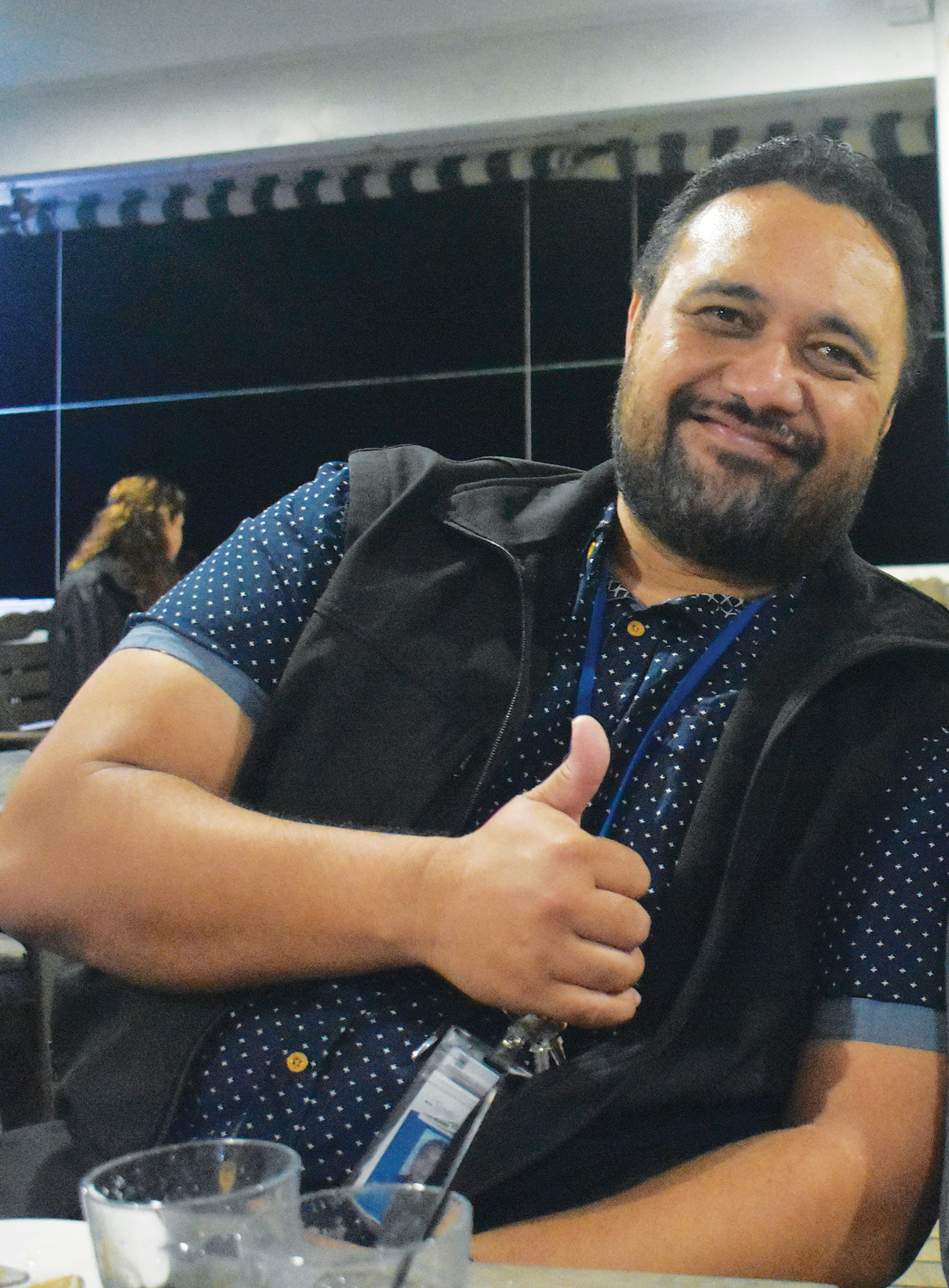
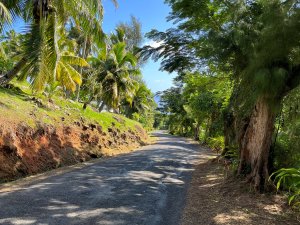
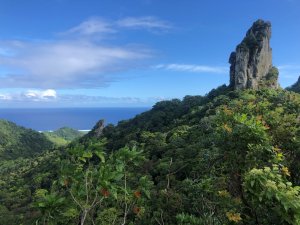
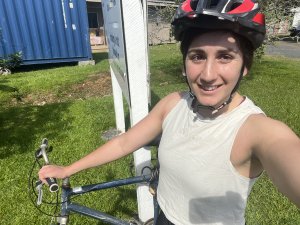
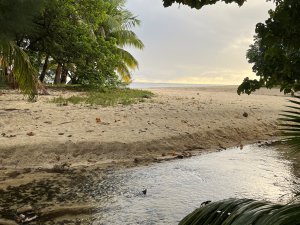





![Barbara Fountain, editor of New Zealand Doctor Rata Aotearoa, and Paul Hutchison, GP and senior medical clinician at Tāmaki Health [Image: Simon Maude]](/sites/default/files/styles/thumbnail_cropped_100/public/2025-03/Barbara%20Fountain%2C%20editor%20of%20New%20Zealand%20Doctor%20Rata%20Aotearoa%2C%20and%20Paul%20Hutchison%2C%20GP%20and%20senior%20medical%20clinician%20at%20T%C4%81maki%20Health%20CR%20Simon%20Maude.jpg?itok=-HbQ1EYA)
![Lori Peters, NP and advanced health improvement practitioner at Mahitahi Hauora, and Jasper Nacilla, NP at The Terrace Medical Centre in Wellington [Image: Simon Maude]](/sites/default/files/styles/thumbnail_cropped_100/public/2025-03/2.%20Lori%20Peters%2C%20NP%20and%20advanced%20HIP%20at%20Mahitahi%20Hauora%2C%20and%20Jasper%20Nacilla%2C%20NP%20at%20The%20Terrace%20Medical%20Centre%20in%20Wellington%20CR%20Simon%20Maude.jpg?itok=sUfbsSF1)
![Ministry of Social Development health and disability coordinator Liz Williams, regional health advisors Mary Mojel and Larah Takarangi, and health and disability coordinators Rebecca Staunton and Myint Than Htut [Image: Simon Maude]](/sites/default/files/styles/thumbnail_cropped_100/public/2025-03/3.%20Ministry%20of%20Social%20Development%27s%20Liz%20Williams%2C%20Mary%20Mojel%2C%20Larah%20Takarangi%2C%20Rebecca%20Staunton%20and%20Myint%20Than%20Htut%20CR%20Simon%20Maude.jpg?itok=9ceOujzC)
![Locum GP Helen Fisher, with Te Kuiti Medical Centre NP Bridget Woodney [Image: Simon Maude]](/sites/default/files/styles/thumbnail_cropped_100/public/2025-03/4.%20Locum%20GP%20Helen%20Fisher%2C%20with%20Te%20Kuiti%20Medical%20Centre%20NP%20Bridget%20Woodney%20CR%20Simon%20Maude.jpg?itok=TJeODetm)
![Ruby Faulkner, GPEP2, with David Small, GPEP3 from The Doctors Greenmeadows in Napier [Image: Simon Maude]](/sites/default/files/styles/thumbnail_cropped_100/public/2025-03/5.%20Ruby%20Faulkner%2C%20GPEP2%2C%20with%20David%20Small%2C%20GPEP3%20from%20The%20Doctors%20Greenmeadows%20in%20Napier%20CR%20Simon%20Maude.jpg?itok=B0u4wsIs)
![Rochelle Langton and Libby Thomas, marketing advisors at the Medical Protection Society [Image: Simon Maude]](/sites/default/files/styles/thumbnail_cropped_100/public/2025-03/6.%20Rochelle%20Langton%20and%20Libby%20Thomas%2C%20marketing%20advisors%20at%20the%20Medical%20Protection%20Society%20CR%20Simon%20Maude.jpg?itok=r52_Cf74)
![Specialist GP Lucy Gibberd, medical advisor at MPS, and Zara Bolam, urgent-care specialist at The Nest Health Centre in Inglewood [Image: Simon Maude]](/sites/default/files/styles/thumbnail_cropped_100/public/2025-03/7.%20Specialist%20GP%20Lucy%20Gibberd%2C%20medical%20advisor%20at%20MPS%2C%20and%20Zara%20Bolam%2C%20urgent-care%20specialist%20at%20The%20Nest%20Health%20Centre%20in%20Inglewood%20CR%20Simon%20Maude.jpg?itok=z8eVoBU3)
![Olivia Blackmore and Trudee Sharp, NPs at Gore Health Centre, and Gaylene Hastie, NP at Queenstown Medical Centre [Image: Simon Maude]](/sites/default/files/styles/thumbnail_cropped_100/public/2025-03/8.%20Olivia%20Blackmore%20and%20Trudee%20Sharp%2C%20NPs%20at%20Gore%20Health%20Centre%2C%20and%20Gaylene%20Hastie%2C%20NP%20at%20Queenstown%20Medical%20Centre%20CR%20Simon%20Maude.jpg?itok=Z6u9d0XH)
![Mary Toloa, specialist GP at Porirua and Union Community Health Service in Wellington, Mara Coler, clinical pharmacist at Tū Ora Compass Health, and Bhavna Mistry, specialist GP at Porirua and Union Community Health Service [Image: Simon Maude]](/sites/default/files/styles/thumbnail_cropped_100/public/2025-03/9.%20Mary%20Toloa%2C%20Porirua%20and%20Union%20Community%20Health%20Service%20in%20Wellington%2C%20Mara%20Coler%2C%20T%C5%AB%20Ora%20Compass%20Health%2C%20and%20Bhavna%20Mistry%2C%20PUCHS%20CR%20Simon%20Maude.jpg?itok=kpChr0cc)